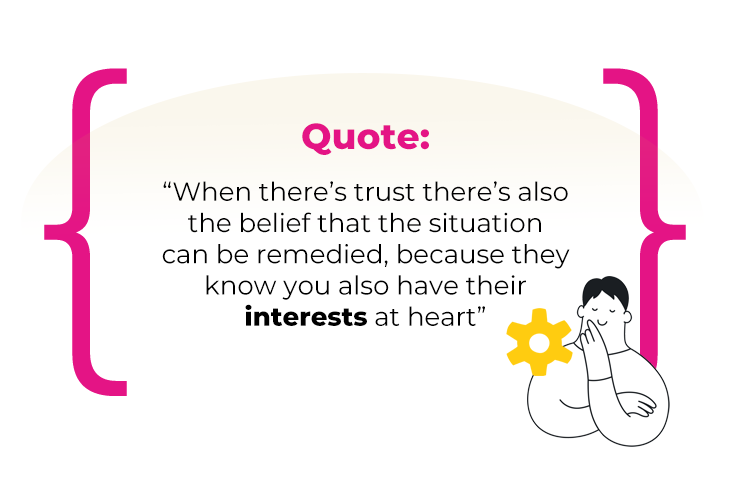In my experience, increasing reach is the main reason that companies build partnership strategies. This is followed closely with the objective of fast-tracking growth. Despite the great value partnerships offer, there is also risk. Partnerships can be very complex. Without the right approach, planning and experience in understanding the complexities involved, that risk grows.
Working with partnerships is a fulfilling and gratifying experience, especially when it enables me to have a direct impact on shaping a company’s strategy which ultimately contributes to its bottom line. Creating impactful partnerships that drive sustained growth is what drives me. It’s also why I’m so passionate about helping companies navigate the risks and complexities associated with partnerships.
In this article I discuss some of the common pitfalls that I’ve seen companies make when approaching partnerships. I also share some best practices to overcome risks and create more successful partnerships.
The risk of focusing only on what you have to gain

When companies enter a growth phase, they often look for partnerships to support that growth. Most often this stage follows the establishment when selling via direct channel, learning the market and investing in market fit. There are some obvious benefits to having a partnerships strategy:
- Collaborating with major organizations can open up new markets and opportunities, and help accelerate growth.
- Smaller businesses can also make use of their partner’s position of strength in the marketplace.
- Working with partners can help companies get feedback from broader markets. This helps to improve both their product and offering.
A major risk in partnerships is only thinking of benefits for your company. The old adage of “What’s in it for me?” holds very true, especially in partnerships. Each company has their own strategy, offering, established organizational culture, priorities and processes. Even when there are common goals, don’t assume that priorities and processes will automatically align.
If you aim to leverage a partner’s technology, for example, it’s important to clarify how this will impact your operational teams. Will they have:
- The skills and knowledge to sell the new offering,
- The capacity to provide the technical support the partnership may require,
- Will they be willing to prioritise making those resources available?
- What will that partnership support look like? Will there be dedicated reps to serving the partnership or would you expect all teams to add this to the existing offering?
Not building a joint go-to-market (GTM) strategy can put the partnership at risk.
In a previous article I talked about what makes a successful partnership. Practically, achieving a successful partnership requires ongoing engagement, taking the time to build a strong and transparent business relationship, and understanding how a partner operates. When you know the value they’re looking to gain, it becomes easier to determine how you can support and deliver on those expectations.
The risk of depending on one partner for success
Having a strong working relationship can help reduce the risk of misalignment of partner resources. But what if you’re depending on one partner for revenue? High volume or high revenue partnerships are highly attractive as they can significantly boost the bottom line. The downside is that a dependency on one partner, no matter how strong the working relationship, can be risky.
Mergers and acquisitions happen, partner champions move on to other opportunities, priorities and strategies might change. Can your business survive if a major partner chooses to exit? These are important considerations when setting up partnership strategy.
A more sustainable approach in terms of securing future revenue is to diversify your partner portfolio. Having several different sized partners driving revenue reduces dependency and risk. This diversity could bridge geographical areas or specific industry/vertical segments or key target markets.
An added benefit to diversification is that it broadens opportunities for future expansion and growth. In working with partners in different industries it creates an outward focus. This strong market awareness helps to identify future opportunities and even possible threats which can be factored into future planning to reduce risk.
The risk of failing to build transparent and genuine relationships

When I first start prospecting a potential new partner, I ask a lot of questions and then sit back and actively listen. Not only to what they’re saying, but also to the meaning behind it. This type of intuitive listening is developed through experience. Learning to hear what they’re saying as well as why they raise certain points, have specific concerns or choose to highlight key areas of the partnership.
A successful partnership is one that benefits both parties and where there’s an equal commitment to achieving that success. Also important is discerning if the intent is matched by the capabilities or organizational priorities. It’s one thing to have a shared goal, but if the sales or technical team that will implement it doesn’t have that goal as their priority, success will be difficult to achieve.
So to be successful, you should make sure you understand their partnership motivation and how they expect to benefit. In addition, assess what resources are available and how they are managed, and how success will be measured. As well as what are the risks from their end.
Why building trust is vital to reducing risk in partnerships

Building a strategy for success together requires nurturing trust and developing genuine relationships based on clear and transparent communications. As much as you plan and try to mitigate risks, things can still go wrong.
When they do, trust makes all the difference. You’re able to pick up the phone and talk to your lead contact at the partner. Explain the situation, the impact, and how you plan to resolve it, and in the process maintain the relationship. When there’s trust there’s also the belief that the situation can be remedied, because they know you also have their interests at heart.
A partnership built on trust not only helps each party achieve their strategic goals, but that also helps them weather challenges that may come their way in future. In a rapidly evolving and highly competitive marketplace, goals will shift and changes will need to be made by both partners to accommodate this. When there’s trust these changes are easier to navigate.
Periodic status meeting such as QBRs are beneficial in order to evaluate if the partnership is achieving what it’s set out to and plan the future together. When there’s trust, this process becomes less about what’s going wrong and more about what needs to be done to get the partnership achieving what it set out to.
If KPI’s aren’t being met, it’s important to be able to brainstorm together on what can be changed or needs to be adjusted. This leverages the expertise of each partner in the process and enables different perspectives to formulate more effective solutions.
By addressing challenges directly through collaboration and spirit of transparency, partnerships can emerge stronger. This not only overcomes immediate obstacles but also unlocks additional opportunities for mutual benefit in the process.
Partnership takeaway:
The complex nature of partnerships inherently gives rise to risk. Being aware of how these risks may arise is the first step to reducing and overcoming them.
As much as partnerships can be beneficial, it’s critical to consider what the benefits are to potential partners as well as your company. Know that it takes skill and commitment to navigate and align different priorities, processes and organizational cultures to make a partnership work. It’s not easy to find that common ground, even when there are common goals.
Be deliberate about building strong relationships from the outset, engaging with all the relevant stakeholders to build trust. There needs to be transparency of capabilities and obstacles if you are to navigate partnership dynamics effectively. Open lines of communication pave the way to work towards achieving successful outcomes that benefit both partners.
Finally, work to develop multiple partnerships to reduce reliance on a single major partner. This will help your company reduce risk and broaden market reach. For any company, the ability to reduce risk while identifying opportunities for growth is very attractive. Understanding common pitfalls to partnerships and how to overcome them is a good roadmap to achieve partnership success.


























